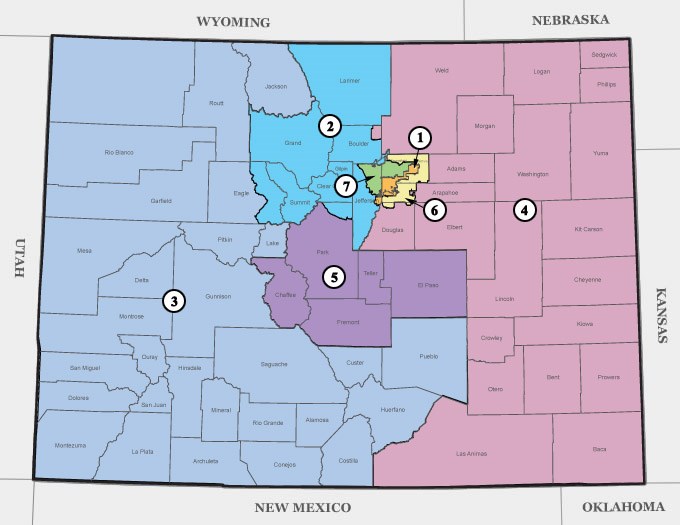Editor’s note: This story was originally published by Sterling Journal-Advocate and was shared via AP StoryShare.
Organizations representing Colorado’s mostly-rural counties are working on a Congressional districting proposal they hope will be considered by the Colorado Congressional Redistricting Commission. Action 22, representing roughly the southeastern fourth of Colorado, along with Pro 15, representing the northeast fourth, and Club 20, representing the Western Slope, will be urging the CCRC to create two congressional districts for rural Colorado.
According to Census projections, the counties outside the Larimer to El Paso urban corridor amount to one-quarter of the state’s population, sufficient for two of the state’s projected eight congressional districts.
The three groups’ boards of directors are working on a plan to send to the commission, based roughly on grouping the Pro 14 and the Action 22 counties together for one district and the Club 20 counties as one district. That would leave the urban corridor from Larimer to El Paso counties to be divided among
the remaining six districts.
The groups released a rough draft of what those maps might look like late Tuesday. Cathy Shull, executive director of Pro 15, said in a statement to the redistricting commission Tuesday that rural and small-town communities deserve “undiluted representation” in the coming decade.
“While the urban corridor … has experienced considerable growth in population and income in the past 10 years, much of the rest of the state has fallen behind,” Shull said. “Please do not dilute rural Colorado’s voice by combining swaths of rural Colorado with chunks of the urban corridor.”
Shull told the Journal-Advocate Tuesday that the map that was released is not in final form, and some exchanges of counties may be necessary to reach the desired population levels in each district. Numbers on each of the regions show the percentage of the desired population for each Congressional district.
For instance, the Pro 15 counties contain about 61% of the desired population, the Action 22 counties contain another 46%, and the Club 20 counties contain about 91%.
Colorado’s current seven congressional districts contain an average of 881,000 residents. Adding an eighth district would drop that to around 719,000 residents in each district, in line with the national average of 700,000.
The redistricting commission is charged with making sure that congressional district populations are within 2.5% of each other Northeast Colorado is in Colorado’s Fourth Congressional District, represented by Congressman Ken Buck of Windsor. But the district includes parts of Arapahoe and Adams counties, two of the fastest- growing areas in the state. Buck’s native Weld County contains vast stretches of open prairie to the east, but the western edge of the county is rapidly urbanizing, with communities like Johnstown, Severance and Firestone experiencing explosive population growth.
Meanwhile, the Western Slope has its own unique challenges. The sprawling Third District, represented by Congresswoman Lauren Boebert of Silt, stretches from Wyoming to New Mexico and includes most of the mountain communities. Club 20 Executive Director Christian Reece called the Western Slope “the most recognizable geographic community of interest in the state.” The district is home to the Colorado River, which supplies water to seven U.S. states and two states in Mexico.
Shull said the three groups hope to have a final recommendation to the redistricting commission by late spring.


.jpg;w=120;h=80;mode=crop)
